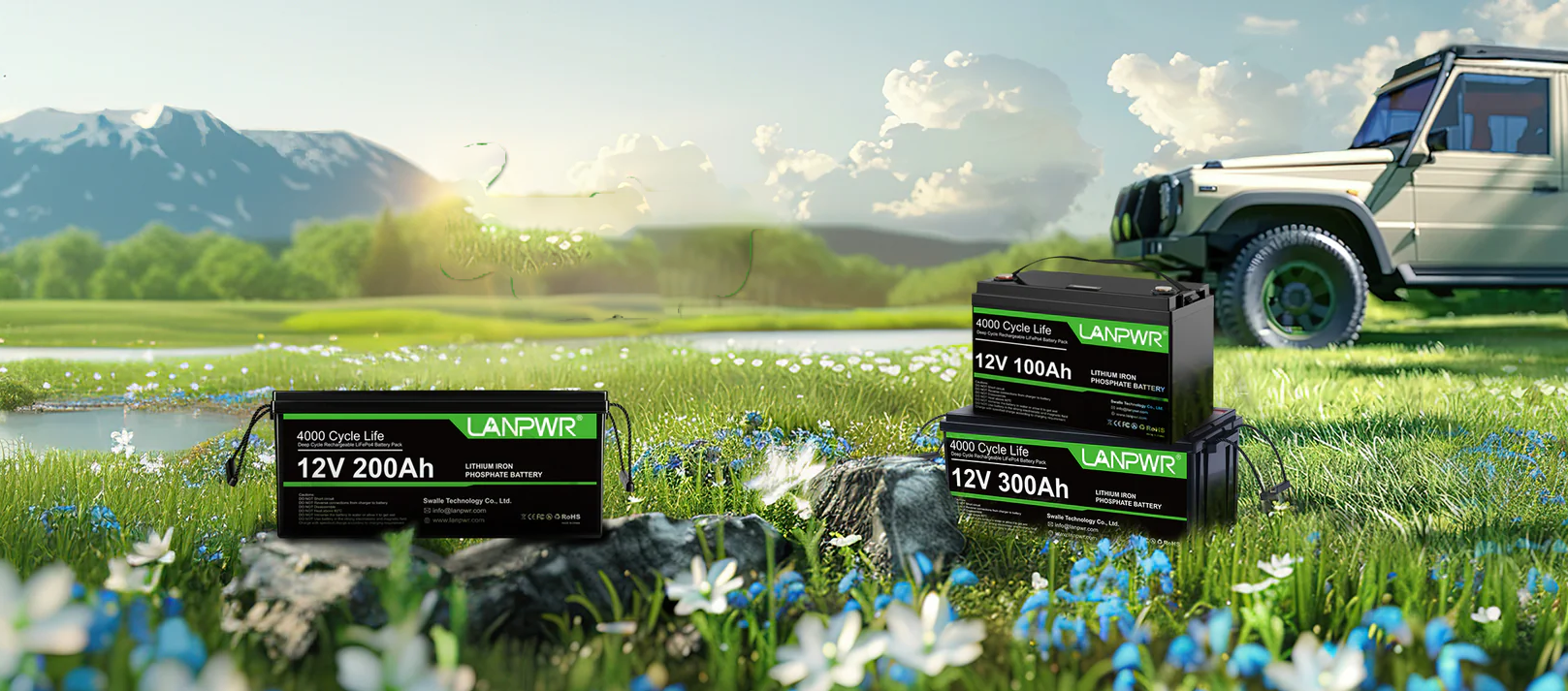In our increasingly digital and mobile world, batteries have become indispensable. From powering our smartphones to electric vehicles, batteries play a crucial role in our daily lives. Traditional lithium-ion batteries use cobalt-based cathodes. However, LiFePO4 batteries utilize iron phosphate (FePO4) cathodes. This cathode material offers several advantages, including high energy density, lightweight design, improved safety, longer lifespan, and lower environmental impact than other lithium-ion chemistries like lithium cobalt oxide (LiCoO2). Enough of the Chemistry!
Which Lanpwr products have LiFePO4 batteries?
Wondering which of our power stations feature LiFePO4 batteries? Look no further—all our batteries and power stations are equipped with this cutting-edge technology. These include the LANPWR 12V 100Ah LiFePO4 Battery, LANPWR 12V 200Ah Plus LiFePO4 Battery, and the LANPWR 12V 300Ah LiFePO4 Battery.
Cycles in LiFePO4 Batteries
For us to be able to maximise the lifespan, we have to understand the charging cycles of batteries. A cycle begins with your power station at full capacity (100%), depleting to 0%, and then recharging back to 100%.
LiFePO4 batteries in our products, including power stations, have an impressive lifespan of over 4,000 cycles. This means that the products can have a lifespan of approximately 10 years of daily usage. The battery retains about 80% of its original capacity even after these cycles.
Tips to Maximize Your LiFePO4 Battery’s Lifespan and Prevent Battery Degradation
-
Avoid Complete Discharges
LiFePO4 batteries are more resilient to deep discharges than other lithium-ion chemistries, but frequent deep cycling can still impact their longevity. Aim to maintain the depth of discharge (DOD) between 20% and 80% whenever possible to minimize stress on the battery cells.
The depth of discharge (DOD) refers to the percentage of a battery's capacity that has been used during a discharge cycle. Excessive discharge beyond these limits can accelerate capacity degradation and shorten the battery's lifespan.
-
Avoid Third-Party Chargers
The charging method and rate significantly impact the lifespan of LiFePO4 batteries. Charging at higher voltages or currents may lead to elevated temperatures and chemical reactions that can degrade the battery over time.
Stick to the charging cables provided with your power station. These cables are precisely calibrated to deliver the correct voltage and current levels, ensuring safe and efficient charging. Using third-party chargers can jeopardize your power station's integrity and pose safety hazards. In addition, avoid fast charging unless necessary to minimize stress on the battery and prolong its lifespan.
-
Maintain Optimal Operating Temperatures
Extreme heat or cold can degrade the battery chemistry and reduce its capacity over time. Store and operate your LiFePO4 battery within the recommended temperature range. Our power stations are built to withstand diverse environmental conditions, both indoor and outdoor. We recommend using Lanpwr products in moderate temperatures (60 to 100°F) whenever possible to enhance battery longevity.
-
Charge and Discharge Parameters
LiFePO4 batteries perform best when operated within specific voltage and current ranges during charging and discharging cycles. Avoid overcharging or over-discharging, as these can significantly reduce the battery's lifespan. Lanpwr power stations have an inbuilt Battery Management System (BMS) to monitor and control charging parameters, ensuring they stay within safe limits. The BMS controls overcharging, over-discharging, over-current, overheating and short circuit.
-
Regular Maintenance
Perform routine maintenance checks on your LiFePO4 battery to ensure it remains in optimal condition. Inspect for any signs of physical damage, such as swelling or leakage, and promptly address any issues. Clean the battery terminals and connections regularly to prevent corrosion, which can impede performance.
-
Storing Batteries Correctly
If you are storing your LiFePO4 batteries for an extended period, follow recommended storage guidelines to maintain health. Store batteries in a cool, dry place away from direct sunlight and heat sources and power them off. Ensure the batteries are partially charged to 50% State of Charge (SOC) before storage to prevent self-discharge or over-discharge issues. Ensure that the batteries are not exposed to extreme temperature exposure, which could compromise battery longevity.
By following these tips, you can maximize the lifespan of your LiFePO4 batteries and get maximum value from your investment in energy storage technology. Whether powering electric vehicles, renewable energy systems, or portable electronics, a well-maintained LiFePO4 battery is a valuable investment that pays in terms of efficiency, reliability, and sustainability. Take care of your LiFePO4 battery, and it will continue serving your energy storage needs for years.














Leave a comment
This site is protected by hCaptcha and the hCaptcha Privacy Policy and Terms of Service apply.